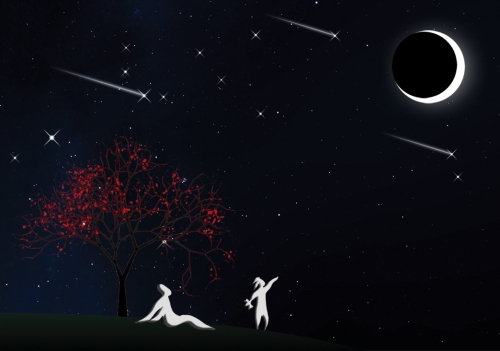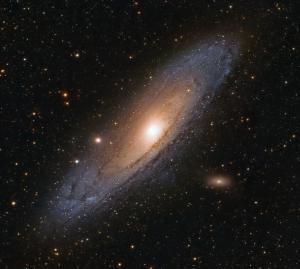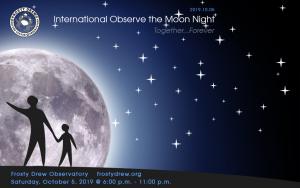
Stargazing Nights
- Where:
- Frosty Drew Observatory
- When:
- Fri, Sep 27, 2019 7:30 pm - 11:30 pm
- Cost:
- $5 Suggested Donation per person 5 years and older
Tonight is Stargazing Night at Frosty Drew Observatory and forecasts are looking rather awesome! We can expect mostly clear to clear skies for the first half of the night. Which rocks because the 2% waning crescent Moon does not rise until dawn, leaving super dark skies for us to celebrate under for the entire night. Cooler temps will also bring significantly less mosquitoes, and will make for comfortable viewing conditions. An excellent first autumn night of stargazing for us at Frosty Drew.
We’ll open the Observatory, Sky Theatre, and Science Center at 7:30 pm tonight. In the Observatory, telescopes will start off with a quick view of Jupiter, showing three of the four Galilean Moons. Saturn will be the prime target of the night with fabulous views of the rings. As the night progresses we’ll star hop along the autumn starscape, checking out star clusters, young white dwarfs, and eventually a view of the Andromeda Galaxy. In the Sky Theatre we will show our regular feature of celestial objects photographed at Frosty Drew Observatory. In the Science Center the works of Frosty Drew Observatory Director, Scott MacNeill will be on gallery. We will start packing up around 11:30 pm.
Overall, tonight is a fantastic night to be out! With mostly clear skies in the forecast, and no Moon present for the entire night, we are set up for an unforgettable night with the cosmos. Dark skies will certainly be available, and the Milky Way, though not in best viewing, will be partially visible overhead. If you haven’t had a chance to see Saturn’s rings yet this year (or ever), then tonight will be a fabulous night to check that item off the list and sit out with our astronomers under the darkest skies in Rhode Island for an early autumn date with thousands of stars.
---------------------------------
Weekly Happenings
Scott MacNeill
Now that autumn is upon us, that summertime view of the night sky, the one that shows off the fabulous view of the Milky Way Galactic Nucleus, is beginning to fade off into the western horizon early in the night. Though bright views of the Milky Way may be departing, we have a fantastic object that really rocks the autumn sky, coming into view, the Andromeda Galaxy (M31). Found in the constellation Andromeda, M31 is the largest galaxy in the Local Group, which is a small cluster of galaxies that the Milky Way is part of. The Andromeda Galaxy resides at near 2.54 million light years distant and is comprised of potentially 1 trillion stars. During the autumn season in the Northern Hemisphere, M31 rises well above the horizon, eventually passing zenith (top of the sky) from our location. At Frosty Drew Observatory, the super dark skies allow for a naked-eye view of the Andromeda Galaxy, once it has risen high enough off the eastern horizon. This makes the Andromeda Galaxy the furthest object we can see with the unaided eye over Frosty Drew, and the only object outside of the Milky Way galaxy that is visible to the unaided eye on site. When we observe the Andromeda Galaxy at Frosty Drew Observatory, we usually will use our smaller telescopes that are capable of wider field views. This is because the galaxy appears quite large in the sky. At 2.54 million light years distant, and about 140,000 light years in diameter, the galaxy will cover about 3° of the sky, or about 6 times the diameter of the full Moon. In the telescope, two satellite galaxies that are orbiting the Andromeda Galaxy become visible. The view is stunning and serves as a reminder of how vast the Universe really is. So stop in on a night with no Moon and make your acquaintance with the stunning Andromeda Galaxy at Frosty Drew Observatory this fall.
Over the next two weeks, evening passes of the International Space Station will continue over the US, specifically the Northeast. Though no notable passes are happening over the next several nights, a view can still be had. Be sure to visit https://frostydrew.org/observatory/#satellites for daily pass times applicable to Southern New England and generally the Northeast. For pass times specific to your location, visit NASA’s Spot the Station at: https://spotthestation.nasa.gov/.
On Saturday, October 5, 2019, International Observe the Moon Night, a world-wide celebration of the Moon, will return for it’s 9th year at Frosty Drew Observatory. This is a night where nearly all telescopes at Frosty Drew Observatory will be focused on the Moon. This year’s Moon will sport a stunning First Quarter phase, and will show many notable features such as the Lunar X, and the Lunar V, alongside Mare Tranquillitatis (Sea of Tranquility), Mare Serenitatis (Sea of Serenity), and dozens of craters. This is a special night at Frosty Drew Observatory, a night where we make amends with the Moon for all the complaining we do every year about how bright it is. Our event starts at 6:00 pm and goes until 11:00 pm. Alongside our telescopes, we will also host NASA Solar System Ambassador – Frank Puglia, who will present about the Moon. We’ll setup the Lunar Lounge, which projects a large live view of the Moon on the exterior wall of the Sky Theatre building. In the Science Center we will have a 12 foot wide panoramic of the Apollo 11 landing site photographed by the NASA Lunar Reconnaissance Orbiter (LRO) on display. On screens around the campus we will show special images and videos about the Moon. Whether you’re a lunar geek or not, this is totally a night to be out, so put the date on your calendar and join in the world-wide celebration as we geek out with the Moon. Visit our event page for more information at: https://frostydrew.org/InOMN.
-Scott
Check out our page on Visiting Frosty Drew Observatory to learn more about what to expect at the Observatory and better help you prepare for your visit.
Please note that we do not allow any white lights on our campus from dusk - dawn. This is to ensure an equally awesome view of the night sky for all and to allow for the use of light sensitive astronomical equipment. Learn more about why we have this requirement in The Red Light District
To allow for visitors to freely explore all of the amazing experiences at Frosty Drew Observatory without having to wait in long lines, we have integrated a pass-based group access process that applies to only the large telescope inside the observatory dome. Take a moment to familiarize yourself with this process as part of your planning steps.



